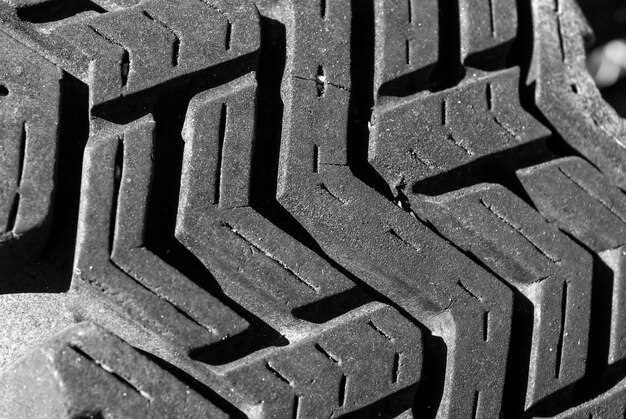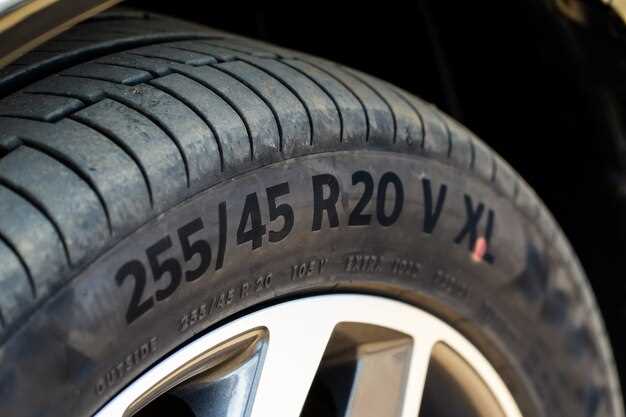
How to read tire size and load ratings
- Dominique Kaye
- 0
- Posted on

When it comes to maximizing vehicle performance and safety, grasping the concepts of tire size and load ratings is essential for every driver. Tire size is not merely a number; it represents a precise balance of width, aspect ratio, and diameter, all crucial for ensuring optimal handling and driving comfort. Each component plays a significant role in how a tire interacts with the road, thus affecting overall vehicle dynamics.
The sidewall of a tire carries valuable information, including not only the size but also the tire’s load and speed ratings. These metrics provide insights into the tire’s capability to support weight and maintain stability at varying speeds. Understanding the implications of tire specifications ensures that drivers select the right tires for their vehicle, while also adhering to safety recommendations and performance standards.
In this article, we will delve deeper into the intricacies of tire size and load ratings, breaking down each element into understandable segments. By the end, you’ll have a comprehensive understanding of how these factors contribute to your vehicle’s performance and safety on the road.
Decoding Tire Size: What Do the Numbers Mean?
Tire size is a critical piece of information for vehicle owners, providing essential details about the tire’s dimensions and performance characteristics. Typically presented in a format such as P215/65R15, tire size comprises several numbers and letters, each serving a specific purpose in understanding the tire’s capabilities.
The first part of the tire size, represented by the letter “P” in our example, denotes the type of tire. “P” indicates it is a passenger vehicle tire, while other letters, like “LT” for light truck tires, may also be seen. Following the type designation, the first set of numbers (215) indicates the tire’s width in millimeters. This measurement is taken from sidewall to sidewall and is crucial for determining how the tire fits on the wheel and how it interacts with the road surface.
The second number (65) refers to the aspect ratio, which is the ratio of the tire’s height to its width. In this instance, a ratio of 65 means the tire’s height is 65% of its width. A lower aspect ratio usually results in a shorter sidewall, which can enhance handling and performance but may also lead to a harsher ride.
The letter following the aspect ratio (R) indicates the tire’s construction type. “R” stands for radial, which signifies the tire’s layers run radially from the center. This construction style is standard in modern tire design as it offers improved performance and longevity. Lastly, the final number (15) denotes the diameter of the wheel the tire is intended to fit, measured in inches. This measurement needs to match the wheel size for proper installation and safety.
Understanding these components of tire size is essential for selecting the appropriate tires for your vehicle. The dimensions not only affect performance but also influence ride comfort, fuel efficiency, and overall safety. When choosing new tires, always refer to the specifications set by the vehicle manufacturer to ensure compatibility and optimal performance.
Interpreting Load Ratings: How Much Weight Can Your Tires Handle?

The load rating of a tire is a critical factor that indicates how much weight the tire can safely support. This rating, expressed as a number on the tire’s sidewall, helps vehicle owners understand their tire’s capabilities and ensure safety while driving.
To interpret the load rating, first locate the number on the tire’s sidewall, typically following the tire size designation. For example, in a tire labeled as 225/65R17 102H, the “102” represents the load index. Each number corresponds to a specific weight capacity, which can range from less than 100 to over 300. It is crucial to note that the load index must be evaluated in conjunction with the tire’s size and recommended inflation pressure to determine the maximum load accurately.
When selecting tires, ensure that the load ratings meet or exceed the total weight of the vehicle when fully loaded, including passengers and cargo. Failure to adhere to the appropriate load rating can lead to tire failure, reduced vehicle handling, and increased stopping distances.
Strongly consider consulting a load index chart, which provides a comprehensive breakdown of the weight each load index can handle. This will help in making informed decisions when replacing tires or upgrading to a different size.
In summary, understanding load ratings is vital for tire safety. Always check the sidewall for the load index number and match it to your vehicle’s specifications to ensure that your tires can handle the weight effectively.
Sidewall Markings: Key Information for Safe Driving

Sidewall markings on a tire provide essential information that contributes to safe driving and efficient vehicle performance. Understanding these markings can help drivers make informed decisions regarding tire maintenance and replacement.
One of the most critical aspects of tire markings is the size specification. This includes details such as the width, aspect ratio, and diameter, typically expressed in a format like P215/65R15. The first number, 215, represents the tire’s width in millimeters, while the second number, 65, indicates the aspect ratio, which is the height of the sidewall as a percentage of the width. The final number, 15, denotes the diameter of the wheel in inches.
In addition to size, load ratings are also marked on the sidewall. This rating indicates the maximum weight a tire can support when properly inflated. For instance, a load index of 92 means the tire can carry up to 1,389 pounds. Exceeding this limit can compromise tire integrity and lead to dangerous situations on the road.
Furthermore, sidewall markings often include the speed rating, which informs drivers of the maximum speed the tire can maintain safely. Ratings like H or V indicate safe operating speeds of 130 mph and 149 mph, respectively. Using tires that are appropriate for your driving habits is crucial for maintaining vehicle safety.
Additionally, the sidewall contains warranty information, manufacturing date, and various performance characteristics such as traction and temperature resistance. This information is vital for ensuring that your tires meet the specific requirements of your vehicle and driving conditions.
In conclusion, being familiar with the sidewall markings is essential for any driver. Recognizing tire size, load ratings, and other key markings ensures not only compliance with safety standards but also enhances overall driving performance.
